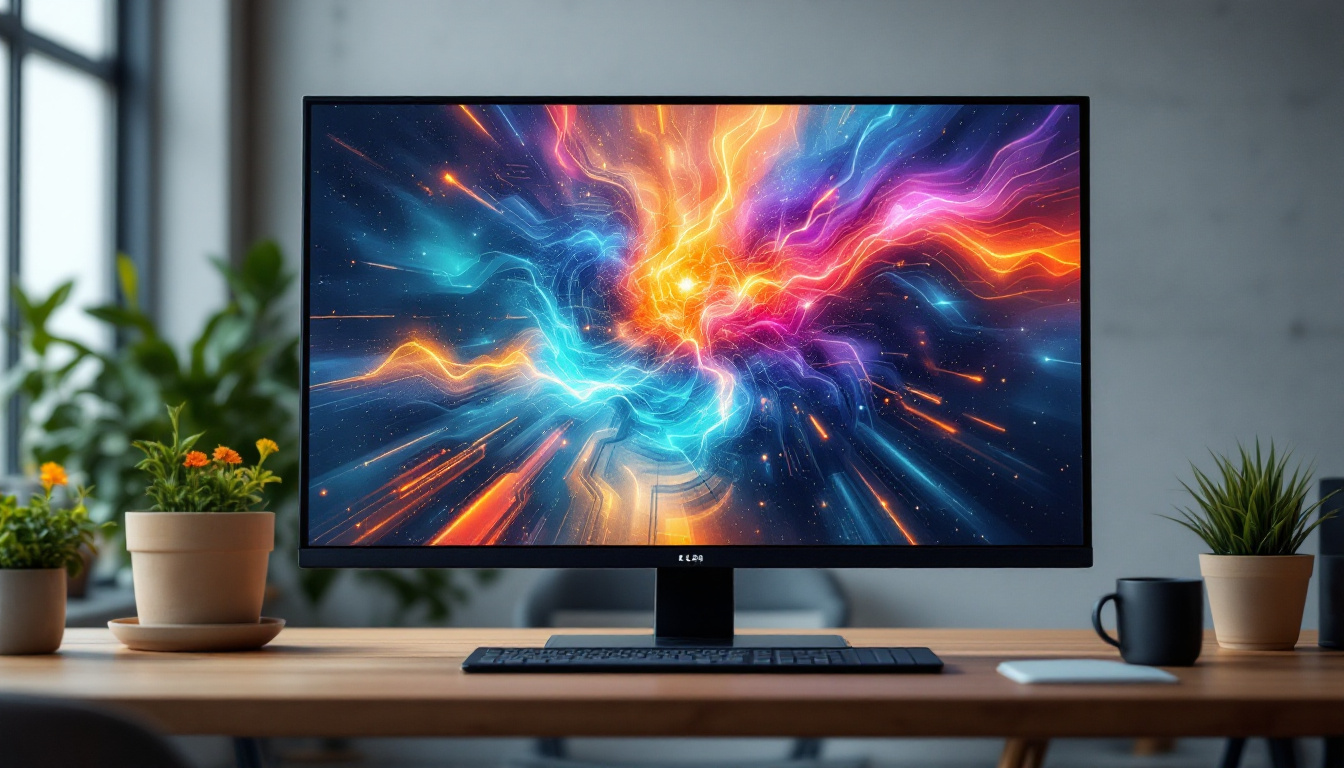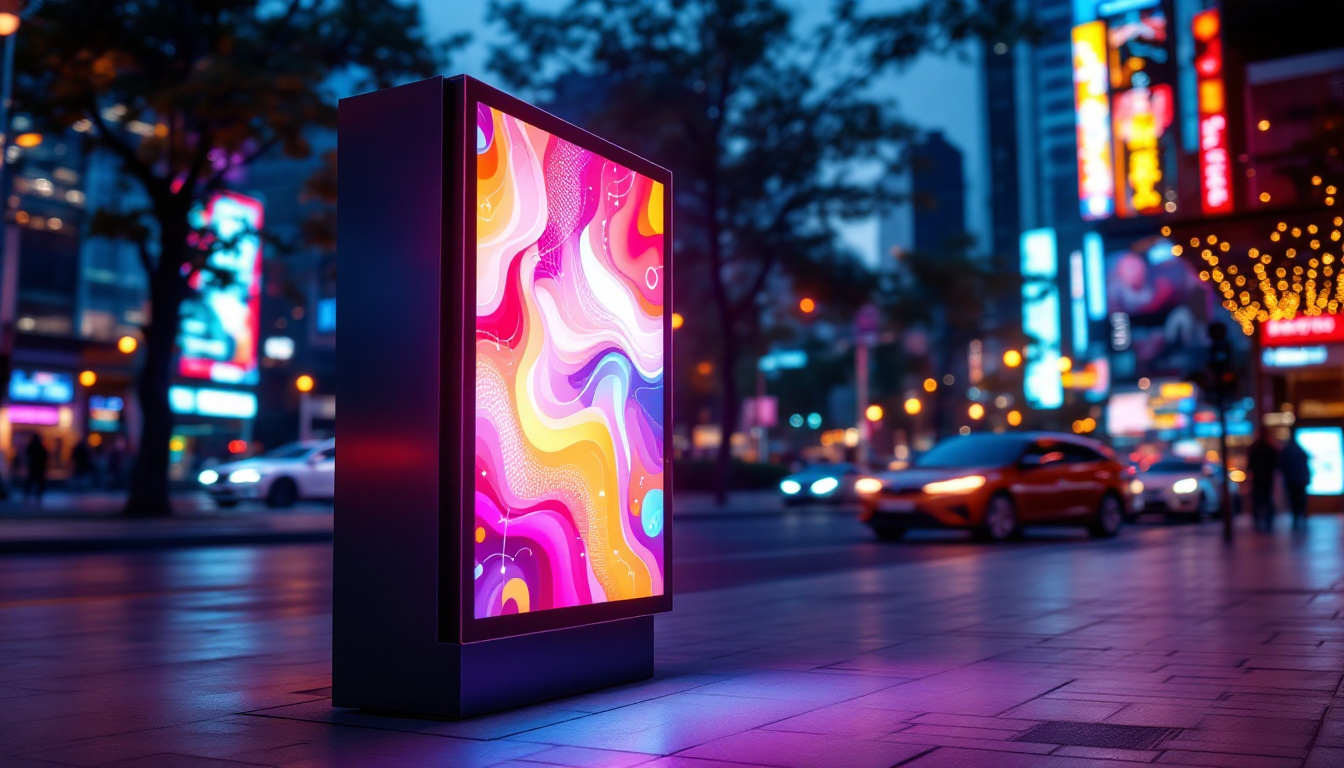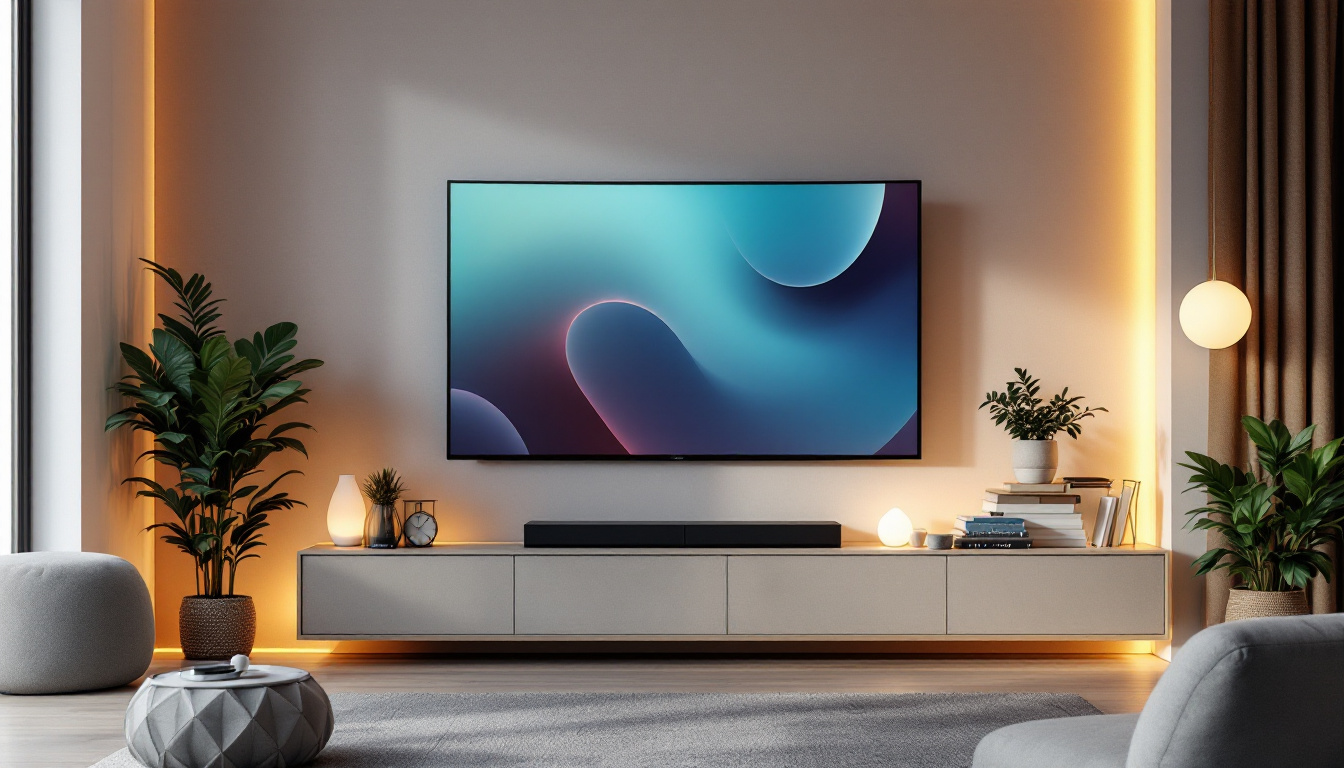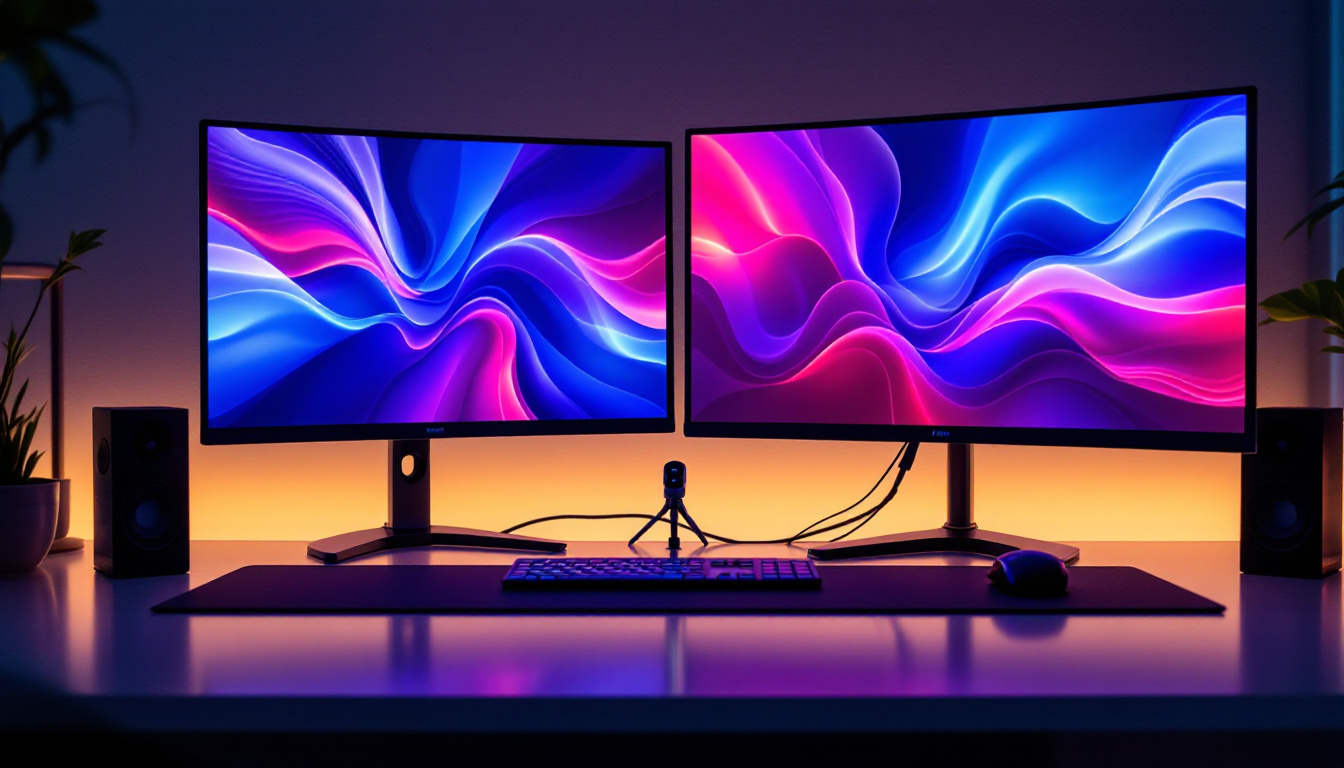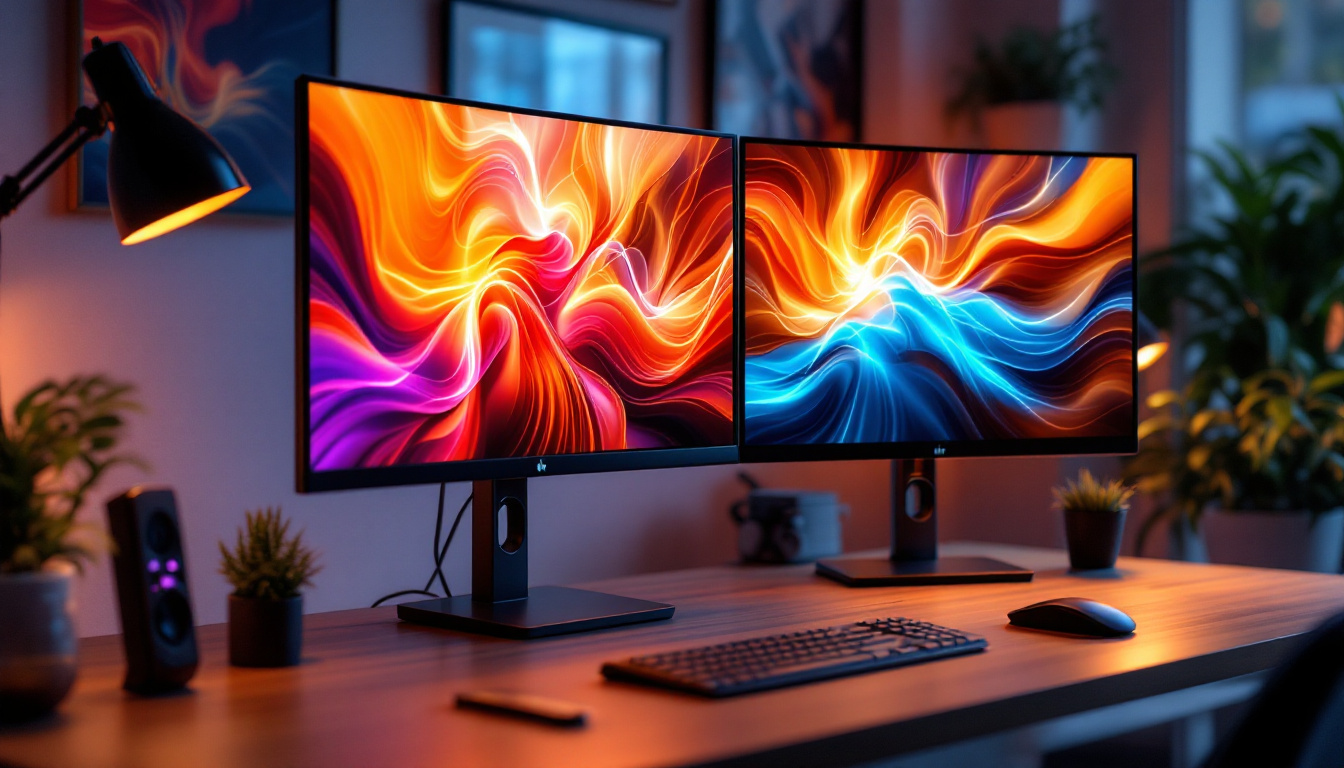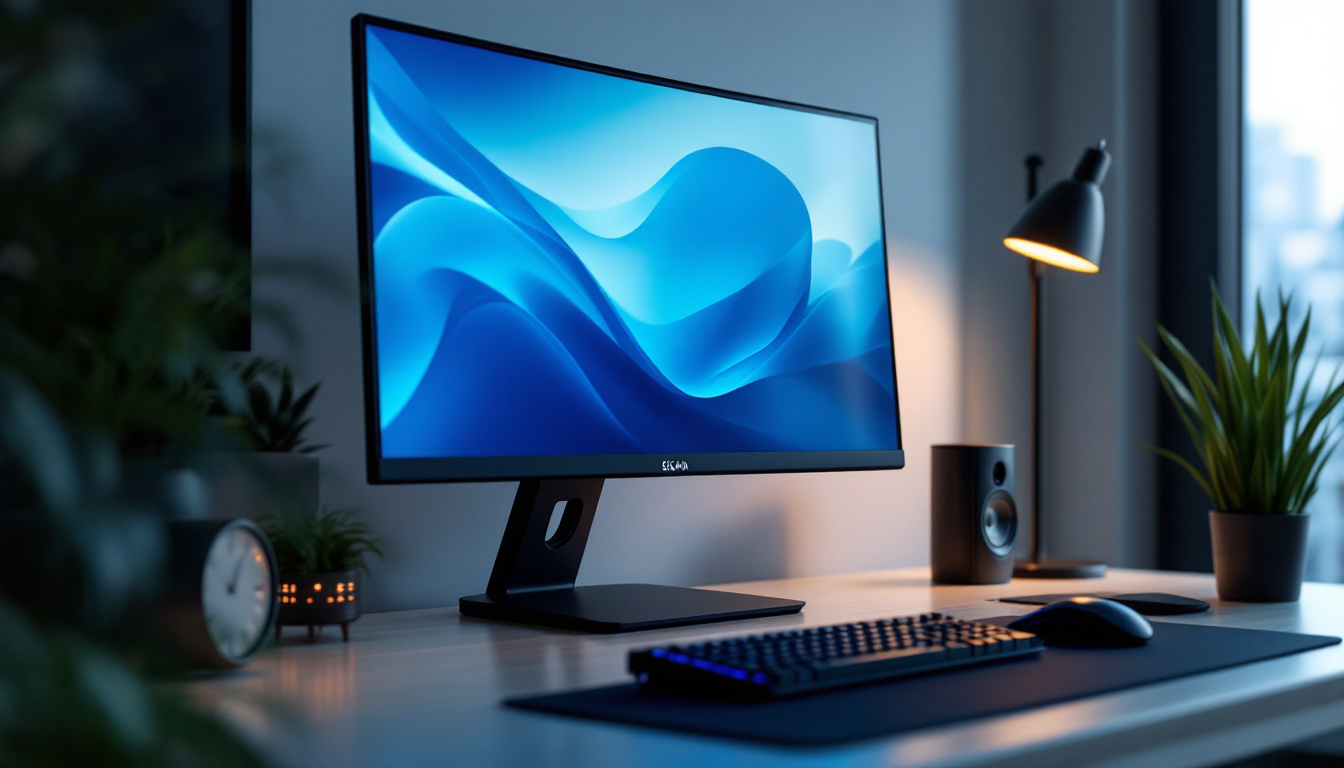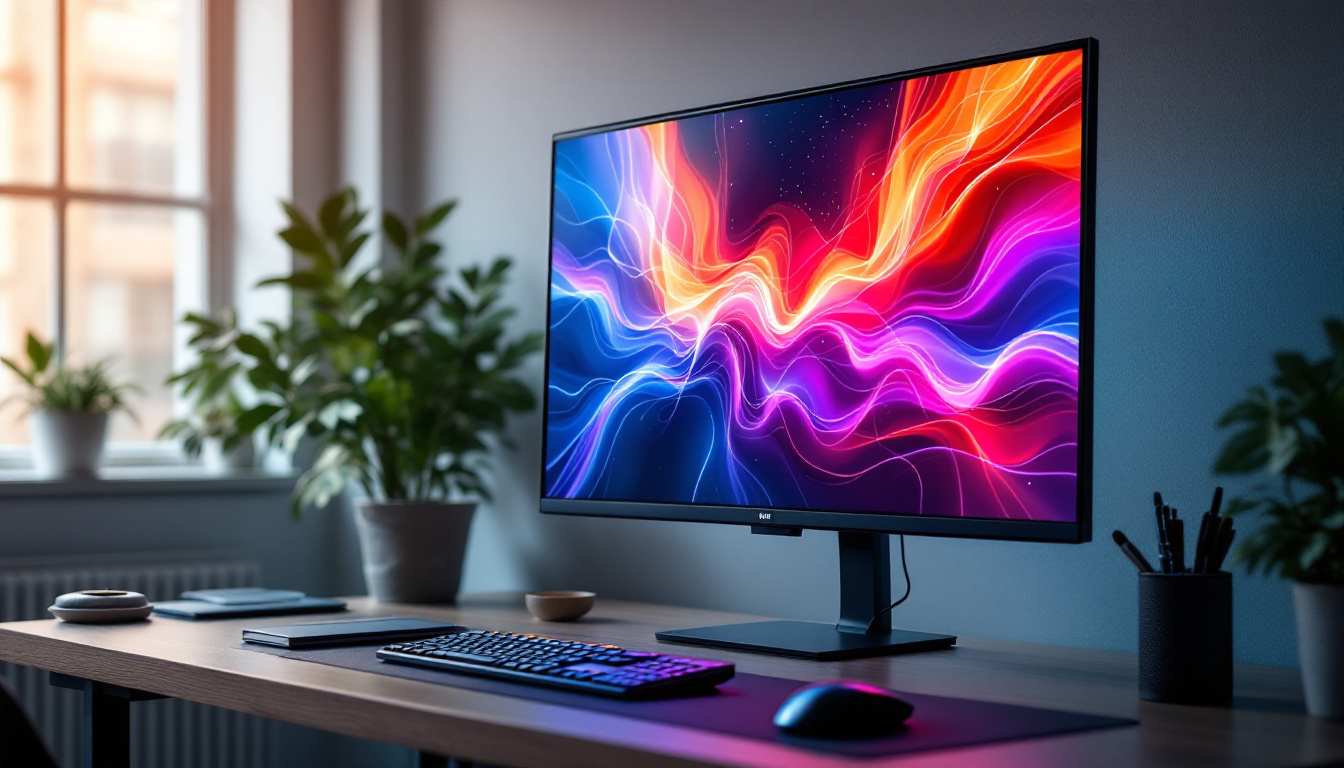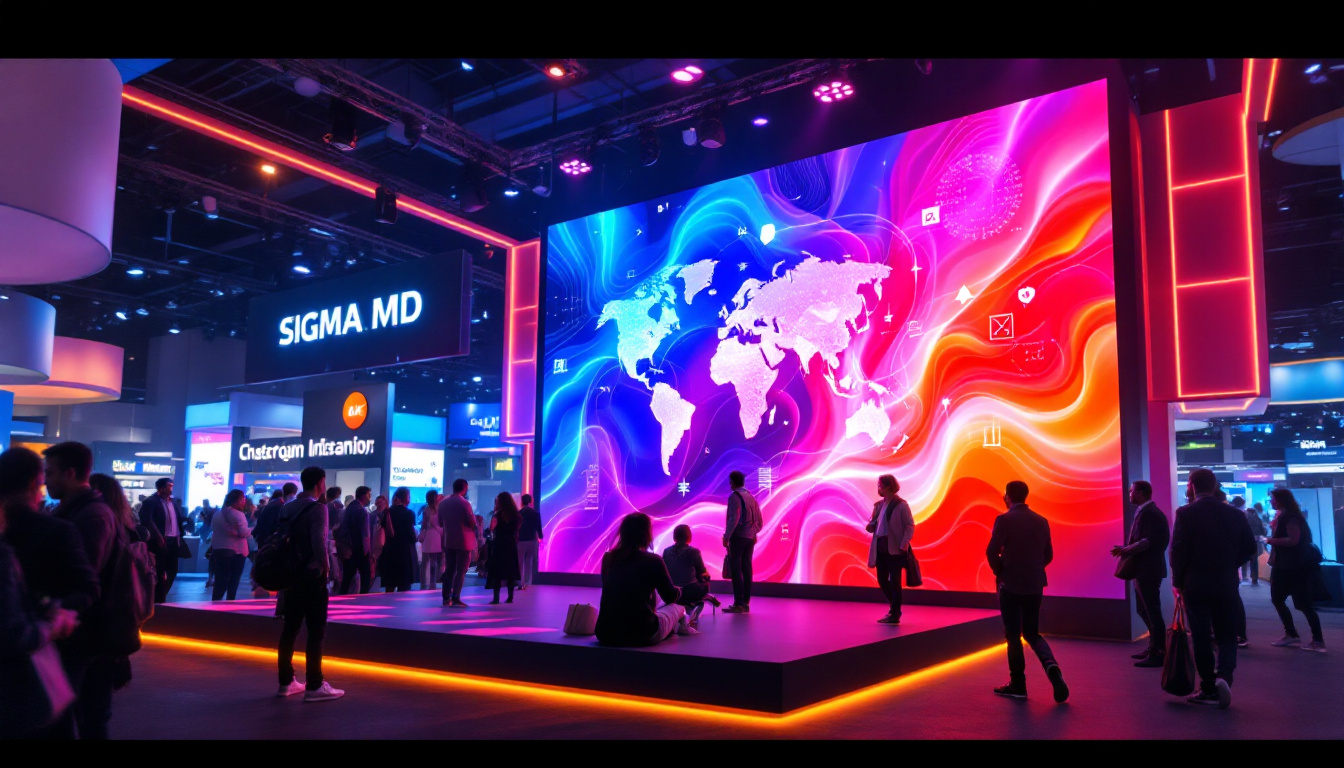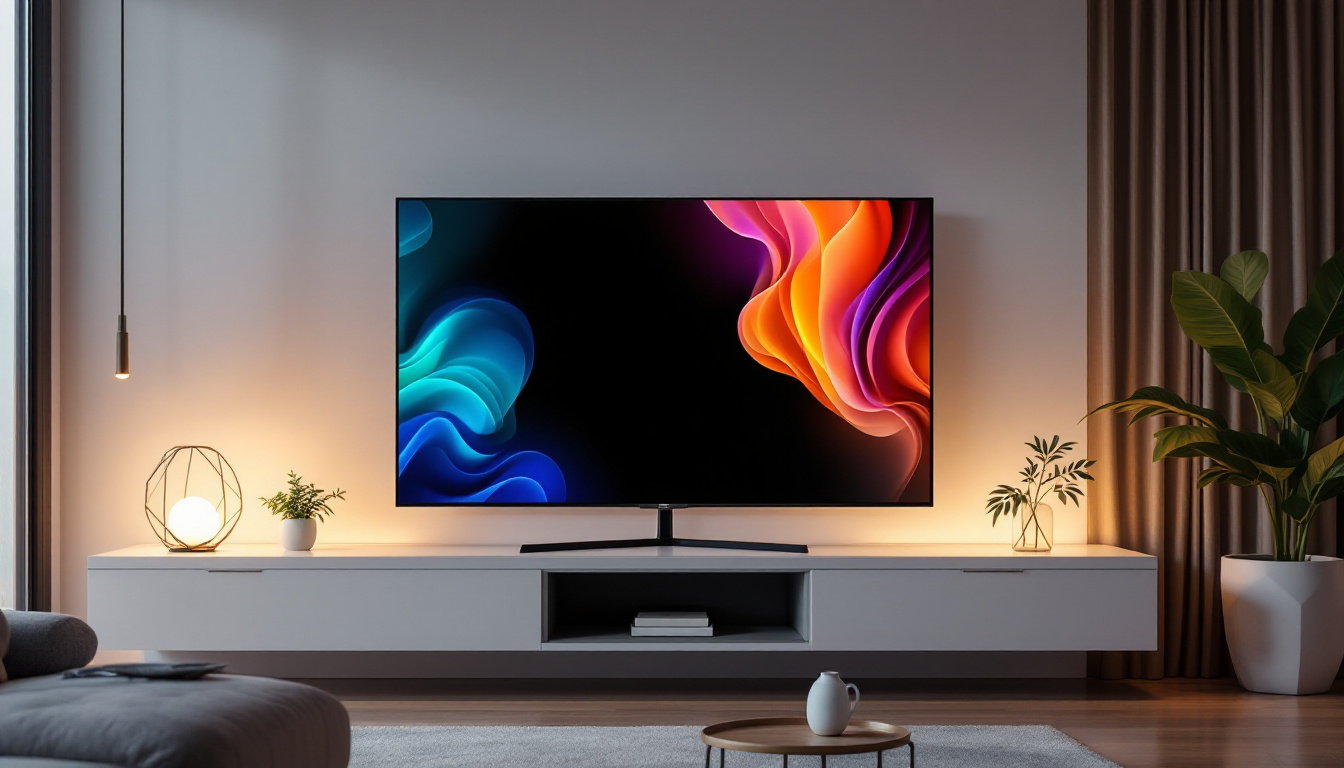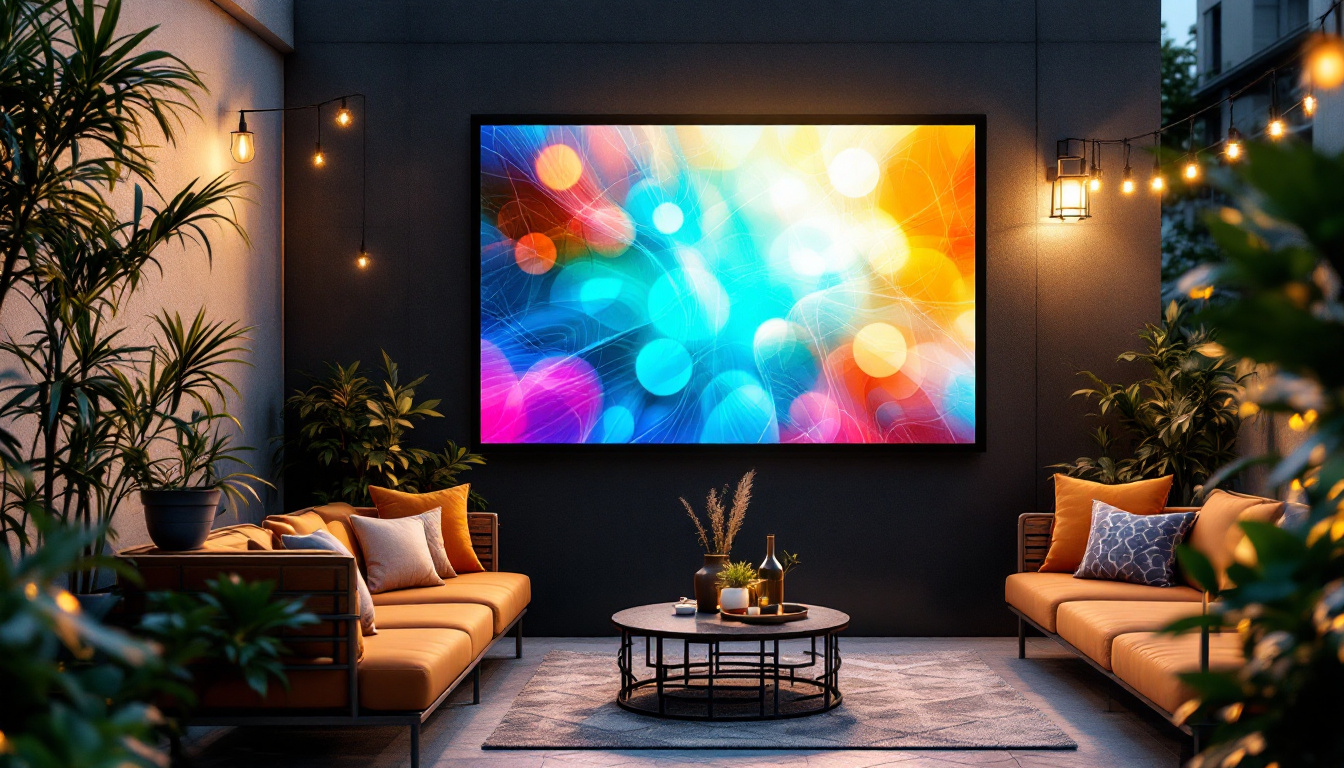In today’s digital age, the demand for larger computer monitors has surged, driven by an array of factors such as remote work, gaming, and multimedia consumption. Large monitors, particularly those utilizing LED technology, offer a plethora of benefits that enhance user experience. This article delves into the intricacies of LED displays, their advantages, and what to consider when purchasing a large monitor.
The Evolution of Display Technology
Understanding the evolution of display technology is crucial to appreciating the capabilities of modern monitors. From cathode ray tubes (CRTs) to liquid crystal displays (LCDs) and now to light-emitting diode (LED) displays, each advancement has brought significant improvements in image quality, energy efficiency, and design.
From CRT to LCD
CRTs were once the standard for computer monitors, offering decent image quality but at the cost of size and weight. The introduction of LCDs revolutionized the market by providing slimmer, lighter screens that consumed less power. However, LCDs still had limitations in terms of color accuracy and contrast ratios. The transition from CRT to LCD was not merely a technological shift; it also marked a significant change in user experience. With the advent of LCDs, users enjoyed a more ergonomic workspace, as these displays could be mounted on walls or adjusted to various angles, enhancing comfort during prolonged use. Additionally, the reduction in flicker and glare made LCDs more suitable for long hours of work or gaming, leading to a broader adoption across various sectors.
The Rise of LED Technology
LED technology emerged as a game-changer, enhancing the LCD framework. By using LEDs for backlighting, these displays offered improved brightness, better contrast ratios, and vibrant colors. This advancement paved the way for larger screens that could deliver stunning visuals without compromising on performance. Furthermore, the introduction of organic light-emitting diodes (OLEDs) took the display technology to another level, allowing for true blacks and a wider color gamut. OLED displays can turn off individual pixels, resulting in deeper contrasts and more dynamic images. This capability has made OLEDs particularly popular in high-end televisions and smartphones, where visual fidelity is paramount. As manufacturers continue to innovate, we are witnessing the emergence of flexible and transparent displays, which promise to redefine how we interact with technology in our daily lives.
What is an LED Display?
LED displays utilize light-emitting diodes as a source of illumination, providing a more efficient and vibrant viewing experience compared to traditional LCDs. This technology can be further categorized into two main types: edge-lit and full-array LED displays. The evolution of LED technology has transformed how we interact with screens, making it a staple in various applications, from televisions to smartphones and even large-scale digital billboards.
Edge-Lit vs. Full-Array LED Displays
Edge-lit LED displays feature LEDs positioned along the edges of the screen, allowing for a thinner design. While they are often more affordable, they may not deliver the same level of brightness and uniformity as full-array displays, which have LEDs distributed across the entire back panel. Full-array displays typically offer superior contrast and color accuracy, making them ideal for professionals in graphic design and video editing. Furthermore, full-array technology often includes local dimming capabilities, which enhances the overall picture quality by adjusting the brightness of specific areas of the screen, resulting in deeper blacks and more vibrant colors.
Benefits of LED Displays
LED displays come with numerous advantages, making them a popular choice for consumers. They are energy-efficient, have longer lifespans, and provide better image quality. Additionally, LED monitors are less prone to screen burn-in, a common issue with older technologies. The rapid response time of LED displays also contributes to a smoother viewing experience, particularly beneficial for fast-paced gaming and action-packed movies. Moreover, the compact size and lightweight nature of LED screens make them highly portable, allowing users to easily set up displays in various environments, from home theaters to professional presentations.
Another significant benefit of LED technology is its versatility in terms of application. LED displays are not only found in consumer electronics but also in public spaces, such as airports, stadiums, and shopping malls, where they serve as dynamic advertising platforms. Their ability to display bright and colorful images even in direct sunlight makes them ideal for outdoor use. Additionally, advancements in LED technology have led to the development of flexible and transparent displays, opening new avenues for innovative designs in architecture and advertising. As the technology continues to evolve, the potential for LED displays to enhance our visual experiences is virtually limitless.
Key Features to Consider When Buying a Large Monitor
When shopping for a large computer monitor, several key features should be taken into account to ensure the best fit for individual needs. These features can significantly influence the overall performance and user experience.
Screen Size and Resolution
Screen size is often the first consideration when selecting a monitor. Larger screens, typically starting from 27 inches, provide more screen real estate, which is particularly beneficial for multitasking and immersive gaming experiences. However, screen size should be paired with an appropriate resolution. For instance, a 27-inch monitor should ideally have at least a 1440p resolution to maintain image clarity.
Refresh Rate and Response Time
The refresh rate, measured in hertz (Hz), indicates how many times the screen refreshes the image per second. A higher refresh rate, such as 144Hz or 240Hz, is essential for gamers, as it results in smoother motion during fast-paced action. Similarly, response time, which measures how quickly a pixel can change colors, is crucial for reducing motion blur and ghosting effects.
Connectivity Options
Modern monitors come equipped with various connectivity options, including HDMI, DisplayPort, and USB-C. It’s essential to ensure that the chosen monitor is compatible with existing devices. Additionally, features like built-in USB hubs can enhance usability by providing easy access to peripherals.
Choosing the Right Monitor for Your Needs
Different users have different requirements when it comes to monitors. Understanding the specific needs can help narrow down the options and lead to a more satisfying purchase.
For Gamers
Gamers often prioritize refresh rates and response times. A monitor with a high refresh rate and low response time can make a significant difference in gaming performance. Additionally, features such as adaptive sync technology (like NVIDIA G-SYNC or AMD FreeSync) can enhance the gaming experience by reducing screen tearing.
For Professionals
Professionals in fields such as graphic design, video editing, or data analysis may require monitors with high color accuracy and wider color gamuts. A monitor that supports HDR (High Dynamic Range) can also provide a more dynamic and realistic visual experience, which is crucial for creative work.
For General Use
For everyday tasks such as browsing, office work, and streaming, a large monitor with a decent resolution and good viewing angles will suffice. Features like blue light filters and flicker-free technology can also enhance comfort during prolonged use.
The Importance of Ergonomics
Ergonomics is often overlooked when selecting a monitor, yet it plays a vital role in user comfort and productivity. A poorly positioned monitor can lead to strain and discomfort, impacting overall health.
Adjustability and Mounting Options
Look for monitors that offer height, tilt, and swivel adjustments. This flexibility allows users to position the screen at an optimal viewing angle, reducing neck and eye strain. Additionally, consider monitors that are VESA mount compatible, enabling users to mount their screens on walls or adjustable arms for a cleaner workspace.
Screen Coatings and Flicker-Free Technology
Monitors with anti-glare coatings can help reduce reflections, making it easier to view content in brightly lit environments. Moreover, flicker-free technology minimizes eye strain by eliminating the flickering that can occur at lower brightness levels, making it easier to work for extended periods.
Popular Brands and Models of Large LED Monitors
The market is flooded with various brands and models, each offering unique features and specifications. Some of the most reputable brands in the industry include Dell, LG, Samsung, and ASUS.
Dell UltraSharp Series
Dell’s UltraSharp series is renowned for its exceptional color accuracy and build quality. These monitors are ideal for professionals who require precise color reproduction for tasks such as photo editing and graphic design. With a range of sizes and resolutions, there’s likely a model to suit every need.
LG UltraWide Monitors
LG’s UltraWide monitors provide an immersive experience, perfect for multitasking. The wider aspect ratio allows users to have multiple windows open side by side, making it an excellent choice for productivity. Additionally, many models come with HDR support, enhancing visual quality.
Samsung Odyssey Series
The Samsung Odyssey series is designed with gamers in mind, boasting high refresh rates and curved displays for an immersive experience. These monitors often feature advanced gaming technologies, ensuring smooth and responsive gameplay.
Where to Buy Large LED Monitors
Finding the right large LED monitor involves exploring various purchasing options. Numerous online and physical retailers offer a wide selection of monitors, often with competitive pricing and promotions.
Online Retailers
Online platforms such as Amazon, Newegg, and Best Buy provide extensive inventories of monitors, complete with customer reviews and ratings. Shopping online also allows for easy price comparisons, helping consumers find the best deals.
Local Electronics Stores
Visiting local electronics stores can be beneficial for those who prefer to see the monitor before purchasing. This allows for a firsthand experience of the display quality and ergonomics. Additionally, knowledgeable staff can provide valuable insights and recommendations based on individual needs.
Refurbished Options
For budget-conscious consumers, considering refurbished monitors can be a viable option. Many manufacturers offer certified refurbished products that come with warranties, providing a cost-effective way to acquire high-quality displays.
Conclusion
Large computer monitors equipped with LED technology offer an array of benefits, enhancing productivity, gaming experiences, and multimedia consumption. By understanding the different types of displays, key features to consider, and the importance of ergonomics, consumers can make informed decisions when purchasing a monitor that best suits their needs.
With a plethora of options available in the market, it is essential to evaluate individual requirements and preferences. Whether for gaming, professional use, or general tasks, the right large monitor can significantly improve the overall computing experience. As technology continues to evolve, staying informed about the latest advancements will ensure that users can take full advantage of what modern displays have to offer.
Discover the Future of Visual Display with LumenMatrix
Ready to elevate your visual experience with a large LED monitor that meets all your needs? Look no further than LumenMatrix, a pioneer in LED display technology. Our extensive range of solutions, from Indoor and Outdoor LED Wall Displays to innovative LED Sports and Floor Displays, is designed to bring your visual communication to life. Whether you’re looking to boost brand visibility or create immersive environments, LumenMatrix has the cutting-edge technology to make it happen. Check out LumenMatrix LED Display Solutions today and join the revolution in high-impact, crystal-clear visual storytelling.

